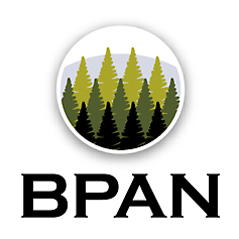 The unique and vulnerable nature in the Barents Region belongs to one of the largest remaining intact forest ecosystems on Earth. At the same time the boreal-arctic nature is under increased pressure from land-use, exploitation and climate change. The BPAN project promotes and supports the establishment of a representative protected area network in the Barents Region.
The unique and vulnerable nature in the Barents Region belongs to one of the largest remaining intact forest ecosystems on Earth. At the same time the boreal-arctic nature is under increased pressure from land-use, exploitation and climate change. The BPAN project promotes and supports the establishment of a representative protected area network in the Barents Region.
Protected area network is an important tool for conservation of biodiversity and adaptation and mitigation of climate change. BPAN project supports safeguarding the biodiversity, functioning of natural ecosystems and maintenance of ecosystem services.
The BPAN project was implemented by the nature conservation authorities, scientific institutes and NGO's of Finland, Sweden, Norway and Northwest Russia.
Aims
The aim of BPAN project was to promote and support a representative protected area network for conservation of biodiversity and boreal-arctic nature – especially forests and wetlands.
Measures
Programme of Work on Protected Areas (PoWPA) under the Convention on Biological Diversity (CBD) was being used as the main framework for the project. Initially there is a need to set baseline and analyze the weaknesses of the Barents protected area networks in relation of PoWPA. The BPAN project provided a northern taiga-boreal perspective, as a regional case, to support the global implementation of the CBD PoWPA.
The project activities of BPAN in 2011-2014 were:
- Analysis of the protected area network by GIS methods
- Regional evaluation of the protected area system, using the CBD PoWPA
- Regional pilot projects on the high conservation value territories in the regions of Northwest Russia
- Communication
The main publications of BPAN were:
Background
The biodiversity target of the Convention on Biological Diversity (CBD) to reduce of the rate of biodiversity loss by 2010 was not achieved. The Parties of the CBD committed themselves in the Conference of the Parties (COP10) in October 2010 in Japan Nagoya with new targets to reduce the loss of biodiversity by 2020.
BPAN project was the initiative of the Barents Euro-Arctic Council Working Group of Environment. BPAN project contributed to the implementation of the Nagoya targets with special emphasis of the important the role of transboundary initiatives within the Barents region.
More information
Brochure of the BPAN projectOpens in new window (pdf)
Contact information
Project Leader Anna Kuhmonen, Finnish Environment Institute SYKE, fistname.surname@environment.fi, tel. +358 295 251 322
Leading Expert Tapio Lindholm, Finnish Environment Institute SYKE, fistname.surname@environment.fi, tel. +358 295 251 379